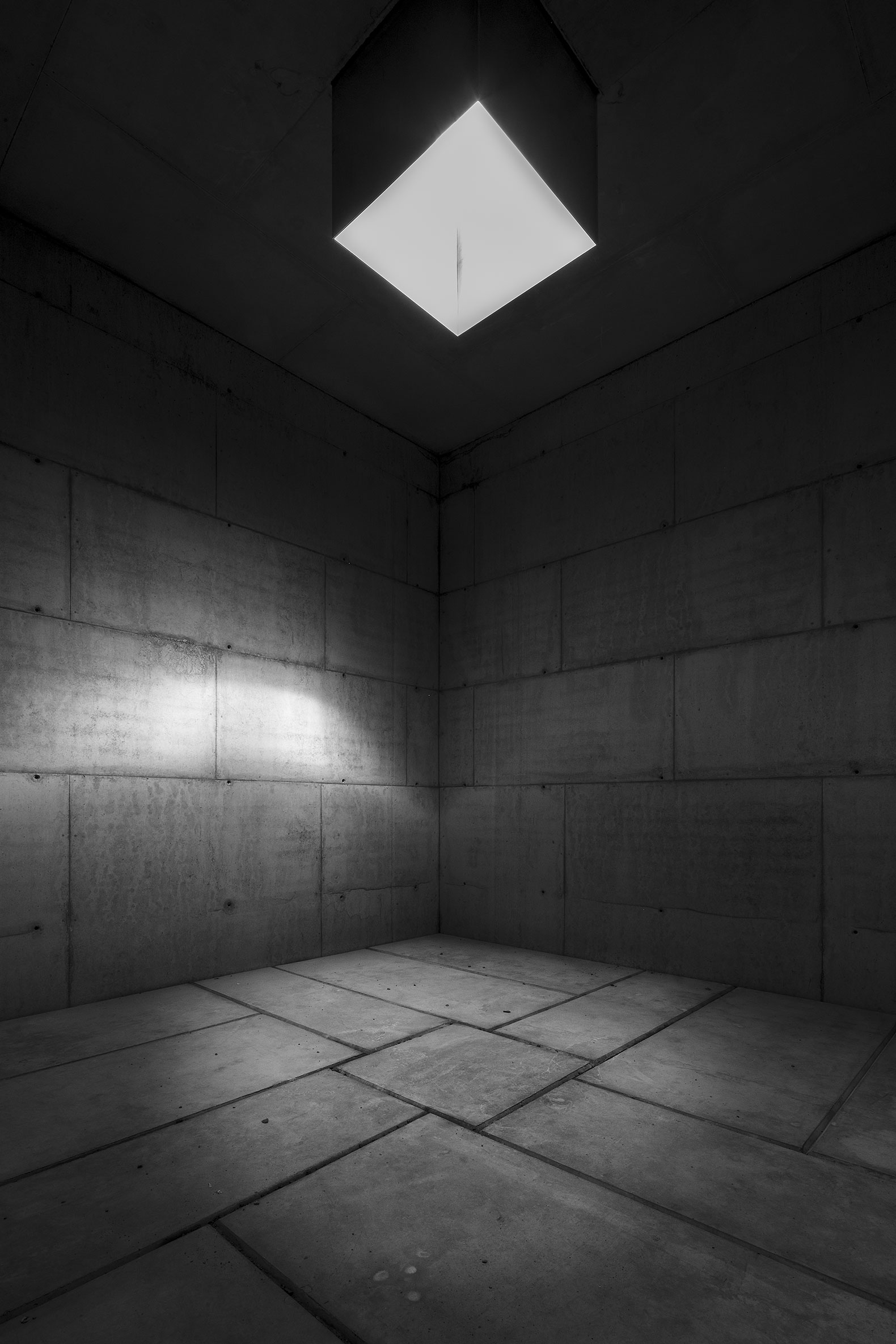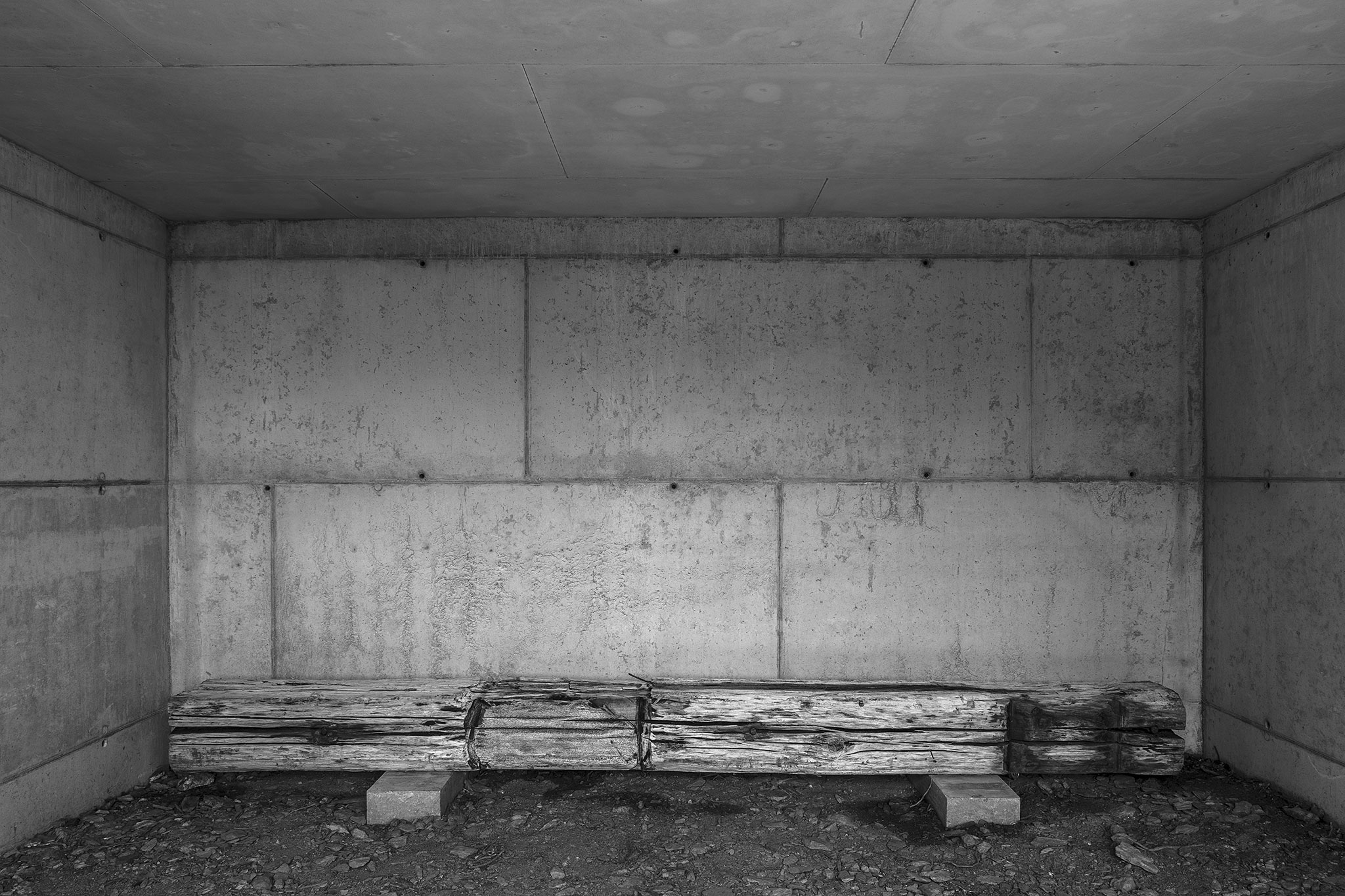With the idea of enveloping the building in the dynamics of the path, all its spaces are traversed, including the roof, which is accessed by an external staircase at the rear of the building.
The work of integrating the building into the landscape was given thanks to the fact that the project is semi-buried and the nakedness and honesty of the materials that constitute it. A plant type was included on the roof that provides visual continuity between the surrounding soil and the building. The walls are made of exposed concrete that distances the building from the romantic idealizations given to nature, providing it with a clear and direct identity.

Interpretation Center by Carlos Pita. Photograph by Juan Rodríguez.
Project description by Carlos Pita
“…a joyous work goes against all expectations, it is an absolute disobedience.”
Boccaccio and me. Pier Paolo Pasolini.
“ … its stone walls teach geometry to the air and to the entire valley”
Galician trips. Alvaro Cunqueiro.
The Camino de Santiago crosses the Castro de Castromaior (1) on its way to Compostela. At its feet, in a bend in the Camino, the INTERPRETATION CENTER is proposed as a door and invitation to discover, investigate and visit the Castro, while it emerges as a stop on the road, as a rest for the pilgrim, as a place, as a protected atrium from the sun and the rain from which to observe what has been walked and still to be walked. A piece immersed in the timelessness of the landscape itself where it is located. Opening up to him. Diving into it.
Construction without a birth certificate or author, rooted to the ground like the wise popular architecture of the region. The walls that build it, and the vegetable covers are already an integral part of the place. Since the Castro is hardly seen, it dissipates its presence in the forest. He seeks anonymity, to be a discreet presence of powerful and rigorous geometry.

Interpretation Center by Carlos Pita. Photograph by Juan Rodríguez.

Interpretation Center by Carlos Pita. Photograph by Juan Rodríguez.
High on road
Always open, visitable, and habitable at all times without the need for permanent staff, since this is an unaffordable burden for the budget of a small town hall like Portomarín.
A low-cost public facility (€200,000.) and almost no maintenance. Which, like the small Galician rural churches, is cared for by the residents of Castromaior themselves.
As it is always open, it allows the free refuge of the pilgrim, who can spend the night, cool off in its fountain or make a fire in its "lareira".
Exhibitive content
At the same time that it acts as a “cruzeiro”, as a lighthouse that points out the Camino and Castro himself, it is its entrance hall, since this is an open-air museum. The center, pending musealism, will exhibit a bronze model of the fort, and 4 screen-printed aluminum panels on the walls of the Central Chamber, which will explain the evolution and history of the fort, as well as the geography that surrounds it. QR codes, printed on the panels, will allow them to be read and understood in all the languages that make up the Camino de Santiago.
Construction
We work on an architecture that implies, as a value, the honesty and ethics of the material. Of great carnality, the very consequence of the construction process. That is stripped of everything to stay in the essential, transcending the construction and function itself.
No aftertaste, oblivious to all fetishism. The material is a constituent of the place, geometry, and gravity give it shape. Concrete architecture is far from inspiration, self-expression, or romantic idealizations of nature. aware of working in a privileged natural and archaeological space, which we must protect and respect.
A stop on the Camino a Compostela that becomes a landscape.
(1) Iron Age site of great importance in the Northwest of the peninsula (V-IV BC / I AD). The occupation continues until the first contact with the Roman world when it is abandoned.





































































